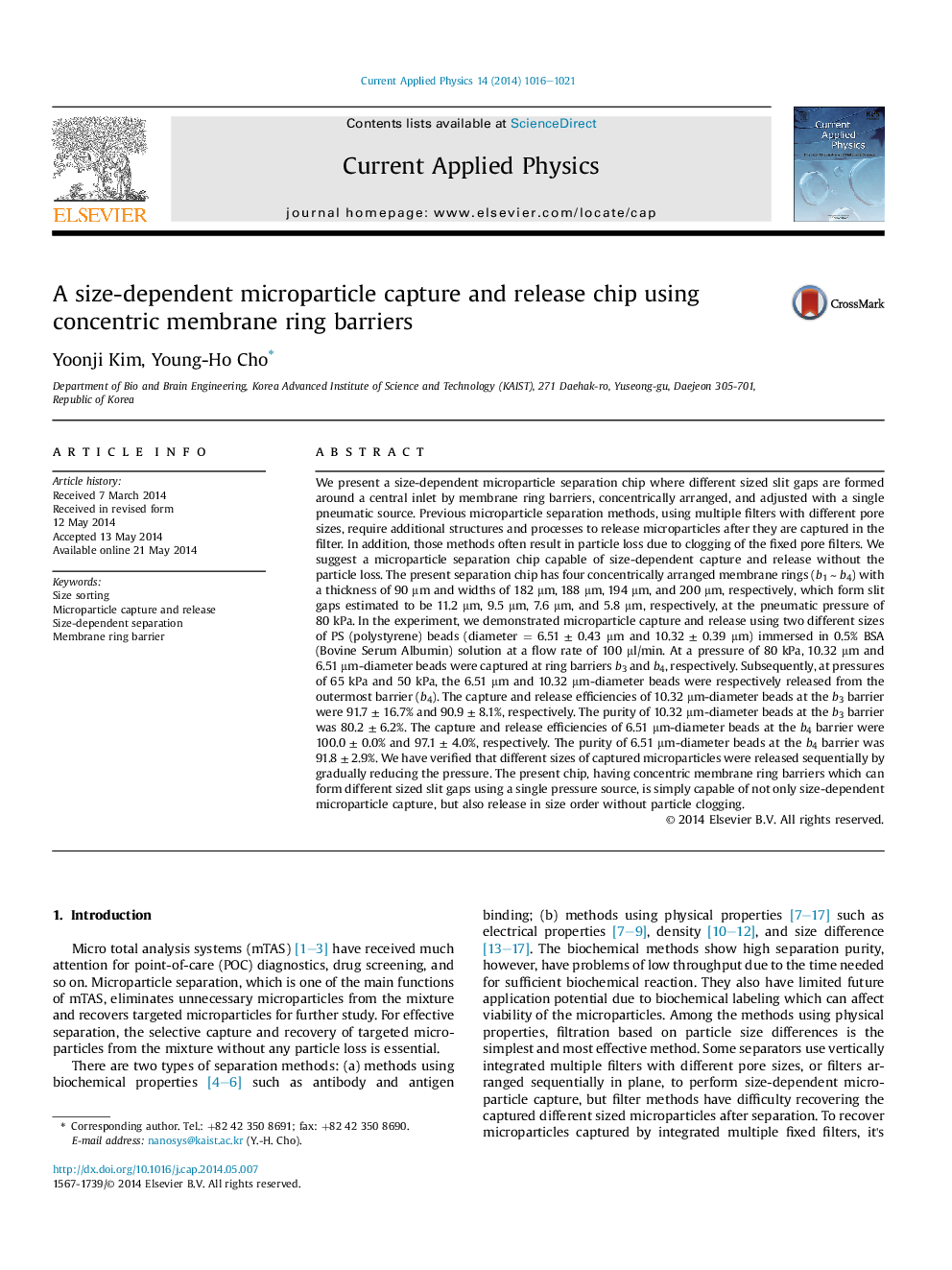| کد مقاله | کد نشریه | سال انتشار | مقاله انگلیسی | نسخه تمام متن |
|---|---|---|---|---|
| 1785831 | 1023396 | 2014 | 6 صفحه PDF | دانلود رایگان |
• A size-dependent microparticle capture and release chip is proposed.
• The chip has four deformable membrane rings with different widths.
• These membrane rings form the barriers with different sized slit gaps by pressure.
• We verified capture and release of different sizes of beads using those slit gaps.
• This device is capable of simple microparticle capture and release without clogging.
We present a size-dependent microparticle separation chip where different sized slit gaps are formed around a central inlet by membrane ring barriers, concentrically arranged, and adjusted with a single pneumatic source. Previous microparticle separation methods, using multiple filters with different pore sizes, require additional structures and processes to release microparticles after they are captured in the filter. In addition, those methods often result in particle loss due to clogging of the fixed pore filters. We suggest a microparticle separation chip capable of size-dependent capture and release without the particle loss. The present separation chip has four concentrically arranged membrane rings (b1 ∼ b4) with a thickness of 90 μm and widths of 182 μm, 188 μm, 194 μm, and 200 μm, respectively, which form slit gaps estimated to be 11.2 μm, 9.5 μm, 7.6 μm, and 5.8 μm, respectively, at the pneumatic pressure of 80 kPa. In the experiment, we demonstrated microparticle capture and release using two different sizes of PS (polystyrene) beads (diameter = 6.51 ± 0.43 μm and 10.32 ± 0.39 μm) immersed in 0.5% BSA (Bovine Serum Albumin) solution at a flow rate of 100 μl/min. At a pressure of 80 kPa, 10.32 μm and 6.51 μm-diameter beads were captured at ring barriers b3 and b4, respectively. Subsequently, at pressures of 65 kPa and 50 kPa, the 6.51 μm and 10.32 μm-diameter beads were respectively released from the outermost barrier (b4). The capture and release efficiencies of 10.32 μm-diameter beads at the b3 barrier were 91.7 ± 16.7% and 90.9 ± 8.1%, respectively. The purity of 10.32 μm-diameter beads at the b3 barrier was 80.2 ± 6.2%. The capture and release efficiencies of 6.51 μm-diameter beads at the b4 barrier were 100.0 ± 0.0% and 97.1 ± 4.0%, respectively. The purity of 6.51 μm-diameter beads at the b4 barrier was 91.8 ± 2.9%. We have verified that different sizes of captured microparticles were released sequentially by gradually reducing the pressure. The present chip, having concentric membrane ring barriers which can form different sized slit gaps using a single pressure source, is simply capable of not only size-dependent microparticle capture, but also release in size order without particle clogging.
Journal: Current Applied Physics - Volume 14, Issue 8, August 2014, Pages 1016–1021
